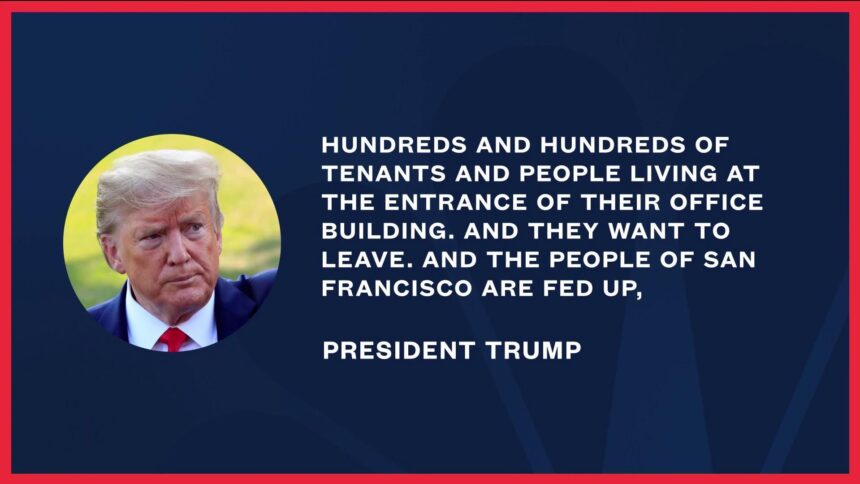Reassessing Approaches to Homelessness: Lessons from the Past
In recent times, the Trump administration has escalated its strategies for tackling homelessness, introducing a range of contentious policies aimed at dismantling encampments and redistributing resources. Proponents of these initiatives contend that a stringent approach is essential for restoring order in cities grappling with visible homelessness. However, historical evidence indicates that similar crackdowns have been attempted previously with varied outcomes, often neglecting to address the fundamental issues underlying the crisis. This article delves into the effectiveness of past efforts, drawing comparisons to current strategies while posing critical questions about the morality and efficacy of treating homelessness as merely a public nuisance. As lawmakers navigate this intricate issue, it is crucial to glean insights from history to inform a compassionate and sustainable response to homelessness in America.
Historical Perspectives on Homelessness Solutions and Their Results
Throughout history, various administrations have implemented measures aimed at alleviating homelessness; however, many have adopted punitive tactics that prioritize law enforcement over social support systems. For example, during the early 1980s under President Reagan’s leadership, policies were enacted that resulted in closing mental health facilities without providing adequate alternatives for those affected. This strategy was marked by an increased police presence and criminalization of homeless individuals rather than investing in long-term solutions. The consequences were predictable: an uptick in visible homelessness alongside insufficient infrastructure designed to assist those in need.
In subsequent decades, numerous cities have engaged in “sweeps” or crackdowns on homeless encampments—strategies reminiscent of contemporary policies. These initiatives often claimed immediate cleanliness and enhanced public safety as their objectives; however, research consistently demonstrates that such approaches fail to reduce overall rates of homelessness and can even worsen conditions for those affected. Studies supporting Housing First models reveal how prioritizing stable housing over punitive actions yields better outcomes for individuals experiencing homelessness. Thus, while these crackdowns may seem like decisive measures at first glance, they frequently result only in shifting problems rather than resolving them.
Analyzing the Shortcomings of Trump’s Homelessness Strategies
The effort to combat homelessness through aggressive enforcement tactics seen during former President Trump’s tenure is not an unprecedented concept within social policy discussions. Historical patterns indicate that such methods often exacerbate existing challenges instead of alleviating them. Instead of fostering sustainable solutions, these crackdowns tend toward short-term visibility—effectively displacing homeless individuals out of sight without addressing their underlying issues. This approach has been characterized by heightened police activity leading only to cycles of criminalization devoid of genuine assistance or pathways toward recovery.
Critics assert that focusing primarily on law enforcement overlooks numerous factors contributing to homelessness—including a lack of affordable housing, mental health issues, and economic instability. Research suggests successful interventions necessitate comprehensive strategies encompassing more humane support systems rather than punitive actions alone. Effective programs typically integrate holistic frameworks targeting essential services like healthcare access, job training opportunities, and housing assistance tailored specifically for vulnerable populations.
| Successful Strategies | Main Features | |||||||||||
|---|---|---|---|---|---|---|---|---|---|---|---|---|
| Housing First Approach | Puts stable housing as a priority without preconditions attached. | |||||||||||
| Total Support Systems | Covers mental health care services along with addiction counseling & employment aid. | |||||||||||
| Civic Involvement Initiatives strong > td >< td >Engages local organizations & community members throughout planning processes .< / td > tr > < strong >Preventive Programs< / strong > td >< td >Aims at stopping instances before they arise .< / td > | < / tr > < / tbody > < / table > Identifying Sustainable Solutions for Addressing Homelessness EffectivelyThe recent trend towards aggressive measures against homeless populations reveals consistent patterns indicating failure; punitive approaches tend not only fail but also worsen circumstances instead offering lasting resolutions . Historical examples , such as Los Angeles’ “Safer Cities” initiative , illustrate how criminalizing this demographic led merely increased encounters with law enforcement yet little improvement regarding actual living conditions experienced by affected individuals . As urban areas face escalating rates among their unhoused residents , innovative solutions emphasizing comprehensive Housing-First models are gaining momentum ; prioritizing provision stable accommodations prior addressing ancillary concerns including healthcare employment opportunities . p > A successful strategy must emphasize community-centered methodologies fostering inclusivity resilience among all stakeholders involved : key components include : p >
|









